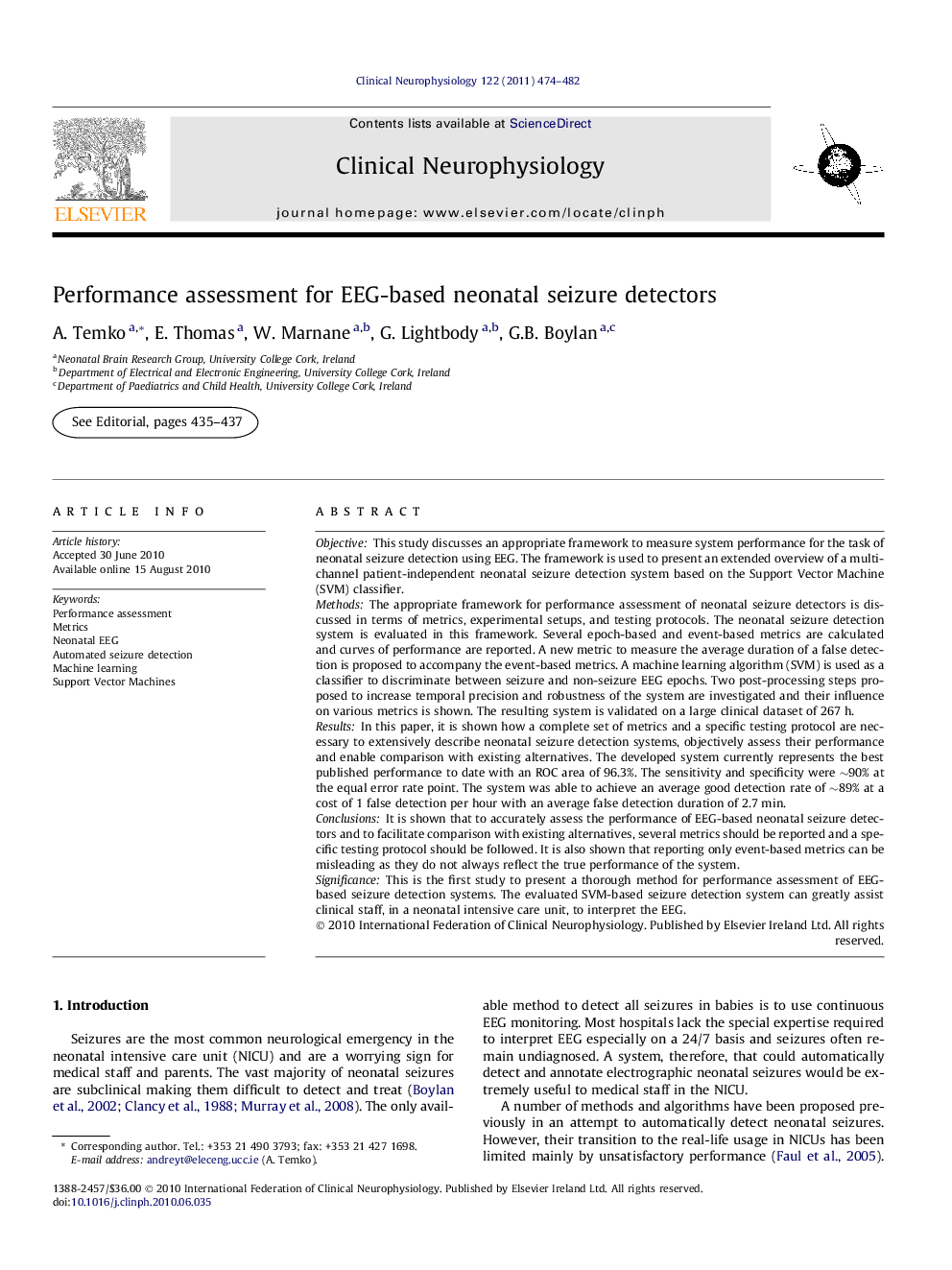| Article ID | Journal | Published Year | Pages | File Type |
|---|---|---|---|---|
| 6008700 | Clinical Neurophysiology | 2011 | 9 Pages |
ObjectiveThis study discusses an appropriate framework to measure system performance for the task of neonatal seizure detection using EEG. The framework is used to present an extended overview of a multi-channel patient-independent neonatal seizure detection system based on the Support Vector Machine (SVM) classifier.MethodsThe appropriate framework for performance assessment of neonatal seizure detectors is discussed in terms of metrics, experimental setups, and testing protocols. The neonatal seizure detection system is evaluated in this framework. Several epoch-based and event-based metrics are calculated and curves of performance are reported. A new metric to measure the average duration of a false detection is proposed to accompany the event-based metrics. A machine learning algorithm (SVM) is used as a classifier to discriminate between seizure and non-seizure EEG epochs. Two post-processing steps proposed to increase temporal precision and robustness of the system are investigated and their influence on various metrics is shown. The resulting system is validated on a large clinical dataset of 267Â h.ResultsIn this paper, it is shown how a complete set of metrics and a specific testing protocol are necessary to extensively describe neonatal seizure detection systems, objectively assess their performance and enable comparison with existing alternatives. The developed system currently represents the best published performance to date with an ROC area of 96.3%. The sensitivity and specificity were â¼90% at the equal error rate point. The system was able to achieve an average good detection rate of â¼89% at a cost of 1 false detection per hour with an average false detection duration of 2.7Â min.ConclusionsIt is shown that to accurately assess the performance of EEG-based neonatal seizure detectors and to facilitate comparison with existing alternatives, several metrics should be reported and a specific testing protocol should be followed. It is also shown that reporting only event-based metrics can be misleading as they do not always reflect the true performance of the system.SignificanceThis is the first study to present a thorough method for performance assessment of EEG-based seizure detection systems. The evaluated SVM-based seizure detection system can greatly assist clinical staff, in a neonatal intensive care unit, to interpret the EEG.
